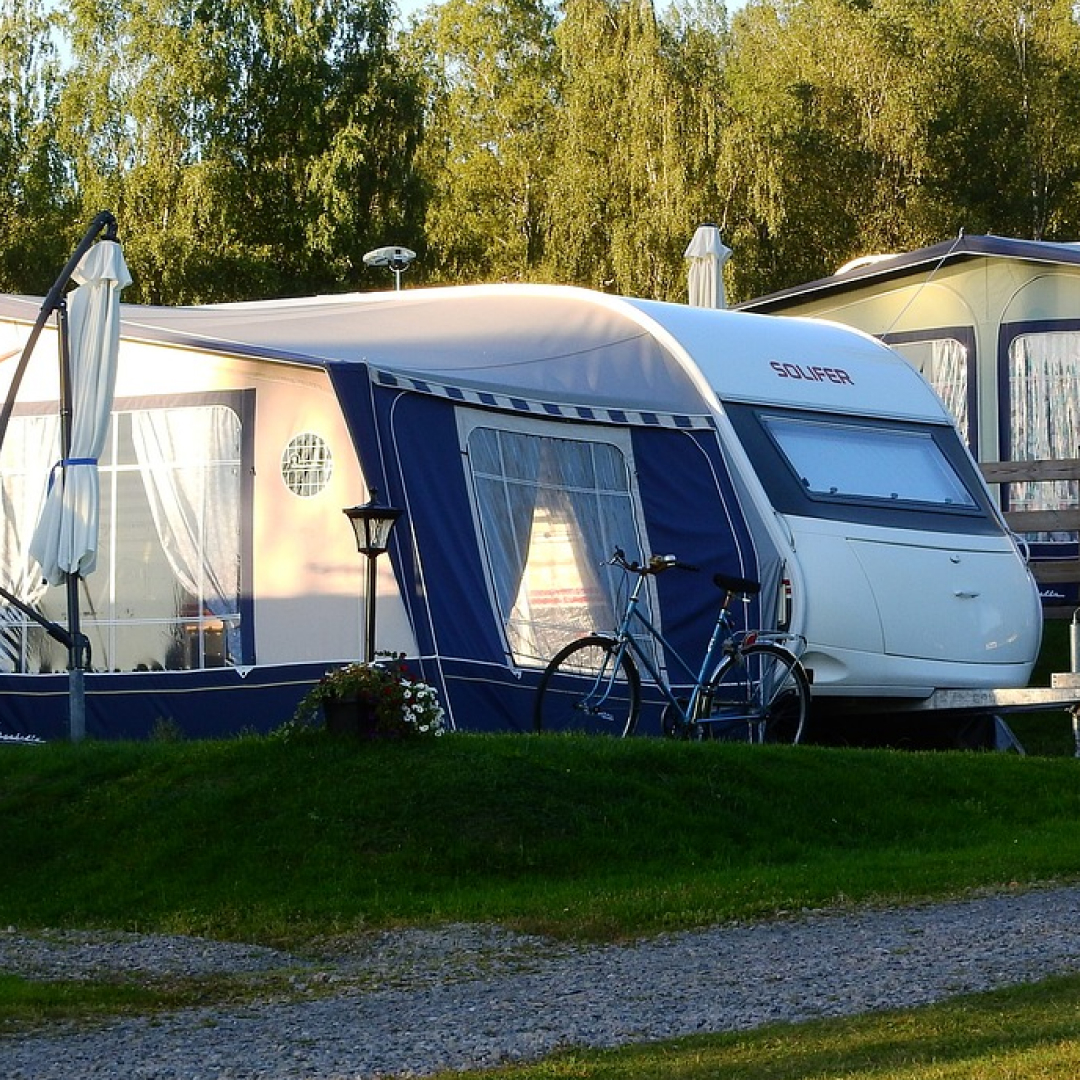Are you a
Homeowner?Are you a
Homeowner?
If you are the owner of a caravan or campsite, you might prefer to read our blog dedicated to complying with fire and CO safety laws here.
This blog covers:
Having working smoke and heat alarms installed in your leisure vehicle is just as important as having them at home. There are on average 360 reported fires in caravans and mobile homes each year, due to their construction they offer little protection to stop the fire from spreading.
With many flammable liquids stored in a relatively small space, it is vital you are aware of the potential dangers and put steps in place to be alerted to the first sign of danger to provide plenty of time to escape.
Regularly check that all the electrical appliances in your caravan are in good working order, this includes cookers, TVs and radiators. Get a reputable electrician to inspect and test them so you know there are no faults that could spark a fire. And at night time, always ensure all appliances are switched off, and never use faulty equipment or overload plug sockets.
FireAngel recommend fitting an optical smoke alarm that is certified to BS EN 14604: 2005 and testing alarms on a monthly basis.
Smoke alarms should be installed at least 300mm from light fittings and walls, ideally as central as possible in the room. If positioning your smoke alarm on the wall, the top of the detection element must be between 150mm and 300mm below the ceiling, and at least 300mm from any neighbouring wall.
Heat alarms should be installed at a distance no greater than 5.3m from the farthest wall, no greater than 5.3m from a door to any room in which a fire might start and no greater than 5.3m from the next heat or smoke alarm. Heat alarms should be sited at least 300mm from light fittings and walls. Heat alarms should not be fitted on a wall.
If you are not using the caravan all year round, it is recommended to remove your smoke alarm from your vehicle for this period, as the battery may be affected by damp conditions. However, you must add fitting your alarm at the beginning of the camping season to your pre-camping checklist.
FireAngel smoke and heat alarms that are suitable for use in a leisure vehicle, including caravans, motorhomes or campervans, include:
It is also worth ensuring you have read the fire safety arrangements at the campsite and know where your nearest fire hydrant or extinguisher is.
Carbon monoxide (CO) is a poisonous gas invisible to the human senses and produced when fuel doesn’t burn properly, usually from badly fitted or poorly maintained appliances.
Symptoms of carbon monoxide poisoning are like having flu but can lead to death in extreme circumstances. Symptoms include headaches, dizziness, nausea, breathlessness, collapse and loss of consciousness. The young, old and pregnant women are at particular risk.
To ensure you are alerted to a carbon monoxide leak, FireAngel recommended to fit an audible CO alarm certified to EN 50291 and test on a monthly basis.
Caravans, campervans and motorhomes have additional CO risks due to the presence of other vehicles, engines, generators or barbecues. However, this does not change the basic guidance on installing a CO alarm.
Carbon monoxide alarms should be installed in the same room as any fuel-burning appliance at a horizontal distance of between 1m’3m from the potential source. Alarms should be located on the same side of a partition as the potential source and located at the high side of the room, if sloped ceilings are present. CO alarms should not be placed directly above a source of heat or steam.
If on a wall the alarm should be close to the ceiling, at a height greater than any door or window and at least 150mm from the ceiling. If the alarm is on the ceiling it should be at least 300mm from any wall & any ceiling obstruction e.g. light fittings.
If the caravan has a single living space, one alarm is sufficient. However, any sleeping accommodation which is in a separate room from the fuel-burning appliance should also contain an alarm.
Do not install the CO alarm in areas which are excessively dusty, dirty or greasy as this can affect the performance of the sensor.
FireAngel CO alarms suitable for use in a leisure vehicle, including caravans, or campervans, include:
It only takes 60 seconds for a tent to be destroyed by a fire ‘ even fire-retardant tents burn quickly. Make sure you keep safe next time you’re sleeping under the stars by following these top camping tips:
When you arrive at a camp or park site, check to see if you have a phone signal and find out where the nearest emergency phone is if not. It’s also worth downloading and setting up the What3Words app to provide your exact location in the event of an emergency.
By installing suitable smoke, heat and carbon monoxide alarms in your leisure vehicle or packing a CO alarm for your next camping adventure, you can relax rest assured you’ll be alerted to the first signs of any danger. View FireAngel’s full range of certified smoke, heat and CO alarms suitable for caravans.
If you can't find what your looking for on our blogs and looking for further guidance and advice, our UK-based Customer Support team are on hand all week from 8:30am until 5:30pm, they can answer any further queries you may have on our products, solutions or services.